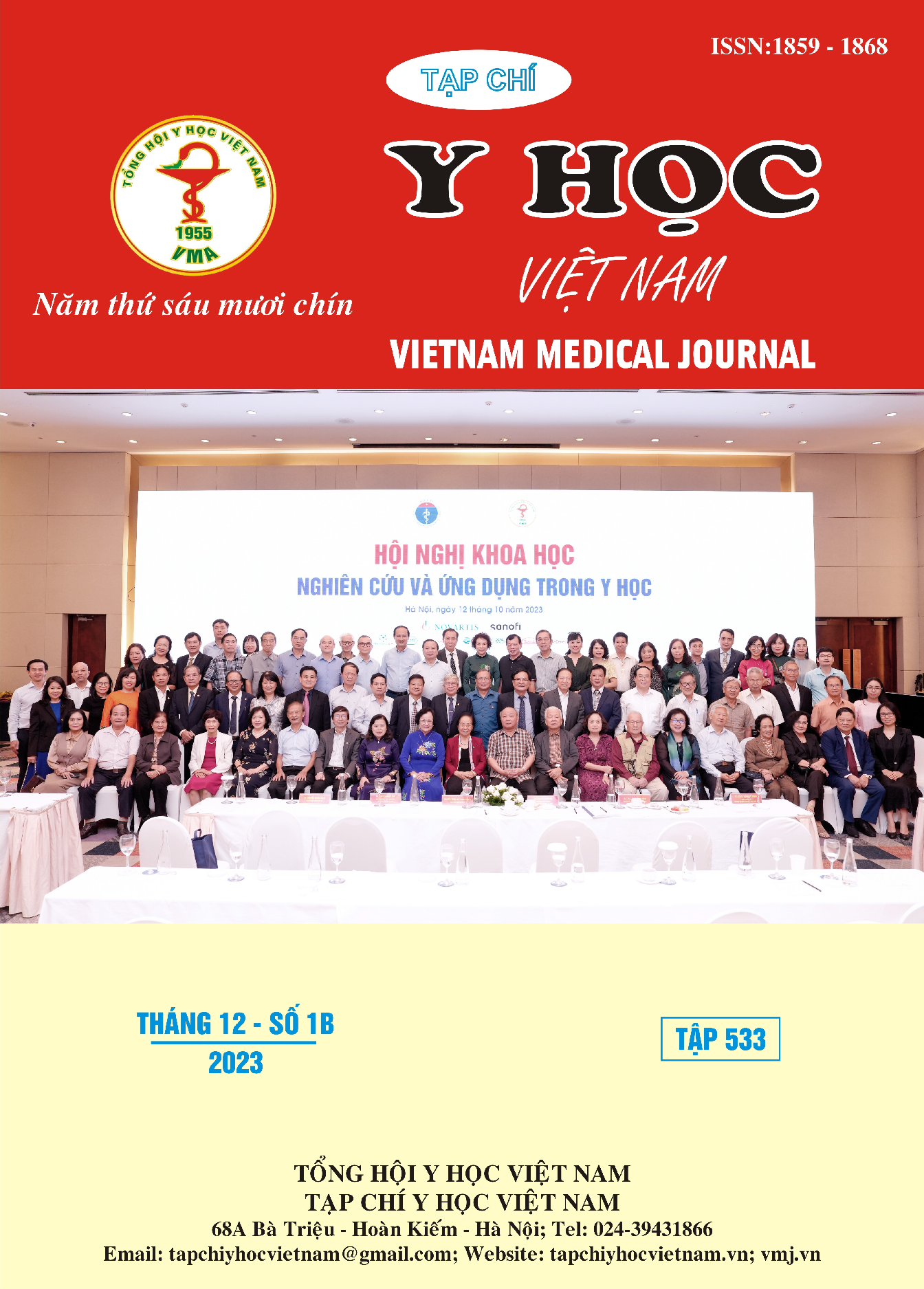SHORT-TERM OUTCOMES OF EXTENDED LYMPHADENECTOMY IN PANCREATICODUODENECTOMY FOR PANCREATICODUODENAL CANCERS
Main Article Content
Abstract
Objectives: To evaluate the short-term outcomes of extended lymphadenectomy in pancreaticoduodenectomy. Subject and method: This was a combined retrospective and prospective descriptive study of the cases who underwent extended lymphadenectomy in pancreaticoduodenectomy for pancreaticoduodenal cancers at VietDuc University Hospital and National Cancer Hospital from July 2009 to July 2018. Results: Elective surgery was performed for 24 patients. Sex ratio was 1 male per 1.67 female. The average age was 53.4 ± 15.1 years. Postoperative pathology: ampullary carcinoma (66.67%), head of pancreatic carcinoma (16.67%), solid pseudopapillary tumor (12.5%), distal of common bile duct cancer (4.16%). The length of resuscitation stay was 4.2 ± 2.0 days. There was one patient having metastasis of lymph node around the common hepatic artery (number 8) (4,16%). Early postoperation complications were pancreatic leakage (12.5%), abscess (8.3%). The length of hospital stay was 26.1 ± 12.0 days. Conclusions: Extended lymphadenectomy pancreaticoduodenectomy for pancreaticoduodenal cancers is a feasible operation, must be performed by experienced and specialized surgeons. This technique requires more time to evaluate long-term survival compared with standard lymphadenectomy.
Article Details
References
2. Capussotti L, Massucco P, Ribero D, et al (2003), "Extended lymphadenectomy and vein resection for pancreatic head cancer: outcomes and implications for therapy", Archives of surgery, 138 (12), pp. 1316-1322.
3. Dellaportas D, Arkadopoulos N, Lykoudis P M, et al (2017), "Extended Lymph Node Dissection in Pancreaticoduodenenctomy? A Case-control Study", JOP J Pancreas (Online), 18 (1), pp. 49-53.
4. Gockel I, Domeyer M, Wolloscheck T, et al (2007), "Resection of the mesopancreas (RMP): a new surgical classification of a known anatomical space", World journal of surgical oncology, 5 (1), pp. 1-8.
5. Kayahara M, Nagakawa T, Kobayashi H, et al (1992), "Lymphatic flow in carcinoma of the head of the pancreas", Cancer, 70 (8), pp. 2061-2066.
6. Kim D H, Choi S H, Choi D W, et al (2017), "Division of surgeon workload in pancreaticoduodenectomy: striving to decrease post‐operative pancreatic fistula", ANZ Journal of Surgery, 87 (7-8), pp. 569-575.
7. Michalski C, Kleeff J, Wente M, et al (2007), "Systematic review and meta-analysis of standard and extended lymphadenectomy in pancreaticoduodenectomy for pancreatic cancer", Journal of British Surgery, 94 (3), pp. 265-273.
8. Pedrazzoli S, DiCarlo V, Dionigi R, et al (1998), "Standard versus extended lymphadenectomy associated with pancreatoduodenectomy in the surgical treatment of adenocarcinoma of the head of the pancreas: a multicenter, prospective, randomized study. Lymphadenectomy Study Group", Annals of surgery, 228 (4), pp. 508.
9. Tol J A, Gouma D J, Bassi C, et al (2014), "Definition of a standard lymphadenectomy in surgery for pancreatic ductal adenocarcinoma: a consensus statement by the International Study Group on Pancreatic Surgery (ISGPS)", Surgery, 156 (3), pp. 591-600.
10. Wang J, Ma R, Churilov L, et al (2018), "The cost of perioperative complications following pancreaticoduodenectomy: A systematic review", Pancreatology, 18 (2), pp. 208-220.


